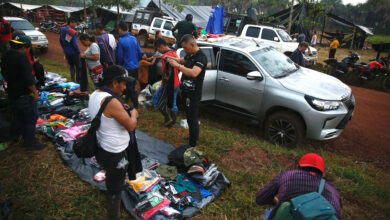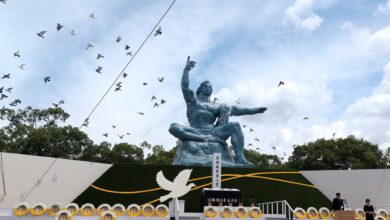The lives blighted by Peru’s crisis

By Carla Samon Ros
Lima, Feb 24 (EFE).- “They shot to kill,” Juan Jose Flores says of the Peruvian police who fired 36 pellets into the gut of his brother, Rosalino, during an anti-government protest last month in the southern region of Cuzco.
A few weeks ago, Rosalino marked his 22nd birthday lying in a hospital bed in Lima.
The pellets that lodged in his abdomen on Jan. 11 destroyed 60 percent of his intestines and he has to take nourishment through feeding tubes.
Before that fateful day, Rosalino was constantly on the move, between his classes at university and his job in construction. Now his life unfolds between the four walls of the hospital’s intensive care unit.
“Right now he’s conscious, thank God,” 24-year-old Juan Jose tells EFE. “But he will have long-term aftereffects.”
His brother’s injury was the occasion for Juan Jose’s first-ever trip to the capital. He visits Rosalino everyday at the hospital and keeps their parents back in Cuzco up to date on the patient’s progress.
Rosalino is one of the more than 1,880 people wounded – including 580 police – in the disturbances that broke out more than two months ago, according to the national ombud’s office, while the death toll stands at 70, the vast majority of them protesters.
Peru’s south, where indigenous people are in the majority, has been the hotbed of protests following the Dec. 7 ouster of elected President Pedro Castillo after he tried to dissolve Congress and convene a constitutional convention.
On Dec. 15, large numbers of people in the southern region of Ayacucho joined a national day of protest against the administration of transitional President Dina Boluarte and 10 perished at the hands of police and soldiers in the second-bloodiest day of the crisis.
One of the fatalities was Leonardo Hancco, 32, a machine operator taking part in a protest for the first time in his life to demand a better future for his 7-year-old daughter and for the twins he and 27-year-old wife Ruth Barcena were expecting.
Barcena watched her husband leave the house before dawn on Dec. 15 and after several hours passed with no word from, she learned from a neighbor that he had been shot.
“I left my house running wearing what I had on, I remember that I went barefoot,” she tells EFE while recounting “the slaughterhouse” she witnessed on the streets.
“There were bullets here, pellets there, tear-gas bombs,” Barcena says. “The people were running, fleeing … and they (soldiers and police) fired.”
Hancco made it to the hospital, but died two nights later.
“I fell into depression and lost my babies,” Barcena says. “The person who killed my husband, killed my children as well.”
As leader of the Association of Families of People Murdered and Wounded on Dec. 15 in Ayacucho, Ruth Barcena is struggling for “truth, justice, reparation, no impunity and memory.”
Even so, she knows that her family’s loss, like that of many others, is irreparable, as she looks for a way to support herself and her daughter.
Roughly 570 km (354 mi) north of Ayacucho, in a shantytown on the outskirts of Lima, Juan Carlos Vergaray faces a similar challenge.
The 47-year-old construction worker doesn’t know how long it will take him to recover from the injuries he suffered a month ago when a dozen cops beat him as he tried to assist a young woman hurt during a protest.





